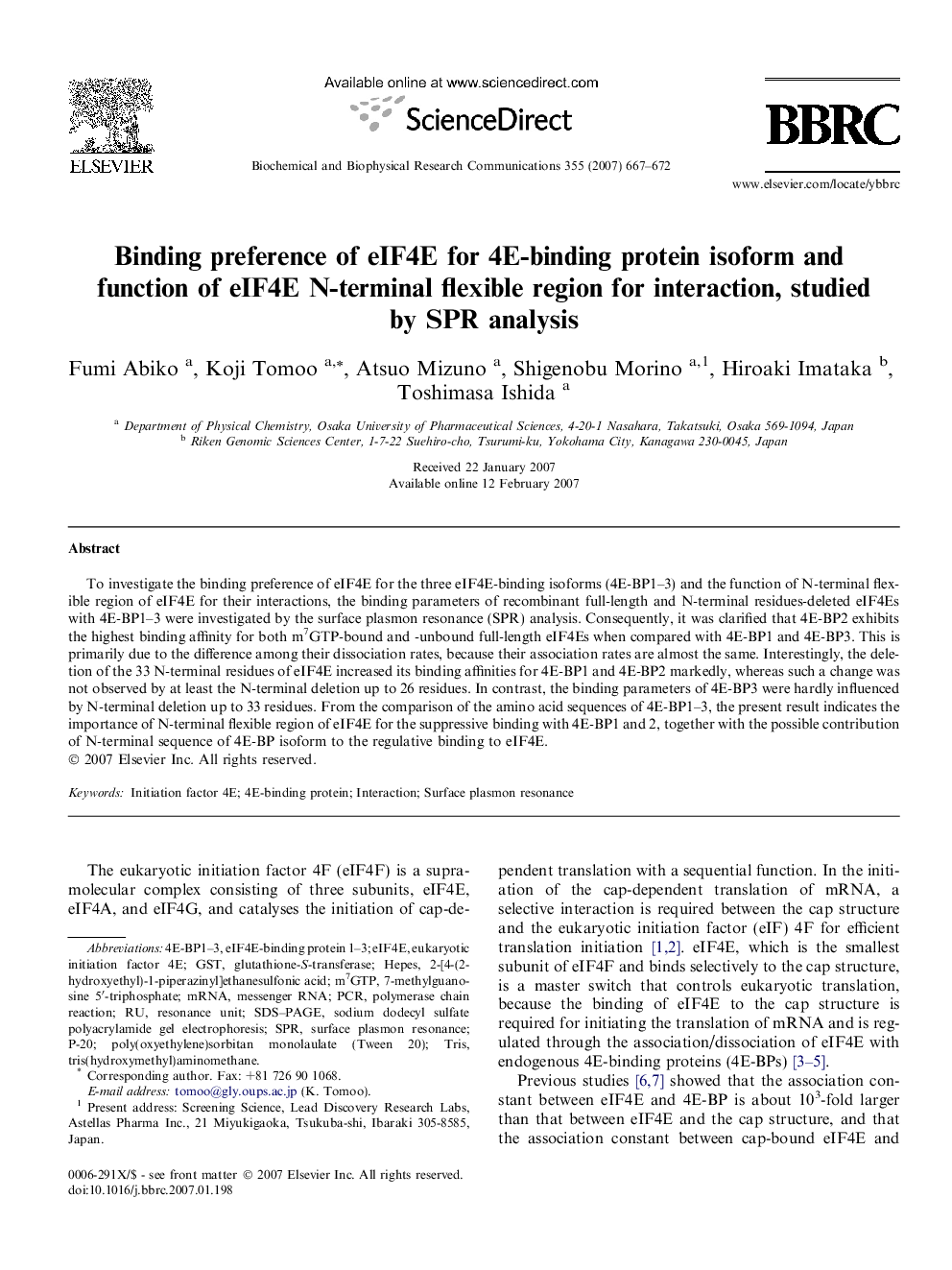| Article ID | Journal | Published Year | Pages | File Type |
|---|---|---|---|---|
| 1938880 | Biochemical and Biophysical Research Communications | 2007 | 6 Pages |
To investigate the binding preference of eIF4E for the three eIF4E-binding isoforms (4E-BP1–3) and the function of N-terminal flexible region of eIF4E for their interactions, the binding parameters of recombinant full-length and N-terminal residues-deleted eIF4Es with 4E-BP1–3 were investigated by the surface plasmon resonance (SPR) analysis. Consequently, it was clarified that 4E-BP2 exhibits the highest binding affinity for both m7GTP-bound and -unbound full-length eIF4Es when compared with 4E-BP1 and 4E-BP3. This is primarily due to the difference among their dissociation rates, because their association rates are almost the same. Interestingly, the deletion of the 33 N-terminal residues of eIF4E increased its binding affinities for 4E-BP1 and 4E-BP2 markedly, whereas such a change was not observed by at least the N-terminal deletion up to 26 residues. In contrast, the binding parameters of 4E-BP3 were hardly influenced by N-terminal deletion up to 33 residues. From the comparison of the amino acid sequences of 4E-BP1–3, the present result indicates the importance of N-terminal flexible region of eIF4E for the suppressive binding with 4E-BP1 and 2, together with the possible contribution of N-terminal sequence of 4E-BP isoform to the regulative binding to eIF4E.
